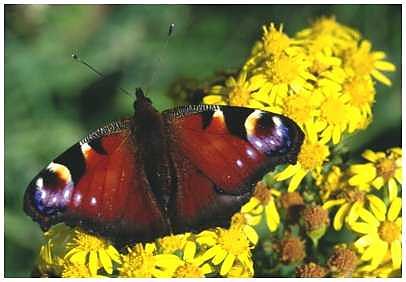 |
Peacock on ragwortThis was taken in the big field below the Concourse. Another example of how it's possible to photograph butterflies at quite a high magnification (1:3 in this case) with a handheld camera. As I've noted elsewhere, I prefer to use a tripod whenever possible for this sort of subject.
|
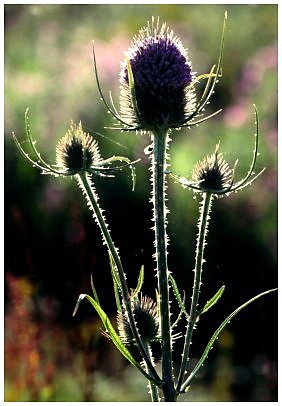 |
Backlit TeaselThis was taken in the same field, just a few feet away, but on a different day. Here I'm using backlighting to emphasise the shape of the plant and the spines that cover the stems. Because I was shooting almost directly into the sun, it was very important to keep the sun from shining directly on the lens, which would cause flare. This was happening even with a lens hood, so I used my field notebook to provide extra shade during the exposure. I'm not entirely happy about the background; the upper part is too light and competes with the main subject. If I'd had time (not something you get much of as a tutor!) I would have selected a different viewpoint, or a different plant altogether. |
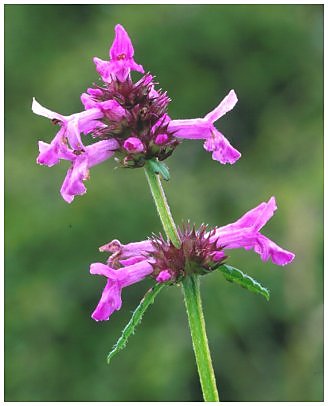 |
BetonyHere's a better background! Betony is difficult to photograph well because it grows in straggly clumps close to the ground and it can be difficult to isolate a single plant. I found this plant after a long search for the right specimen and set up the equipment for a demonstration. The key issues were the importance of paying attention to the background, and the related problem of optimising the depth of field. The soft lighting has enhanced this picture. Direct sunlight would have burnt out detail in the petals. Compare the lighting with that on the teasel above, where strong directional lighting is important. The picture was taken on the field trip to Kingley Vale. |
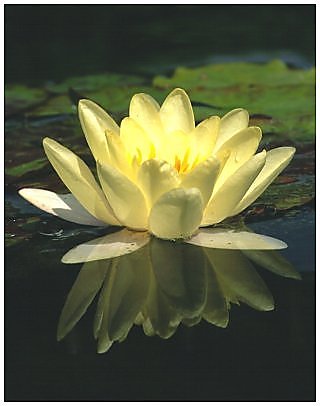 |
LilyWe generally start the practical work on the first day of the course in the grounds of the Earnley Concourse, and in the bottom field where the first two pictures were taken. One of the "challenges" I set the students is the water lilies in the Concourse gardens. A simple enough subject, but a there's a lot to think about: lighting direction, camera angle, composition, reflections, exposure, polarising (or not) filter. |
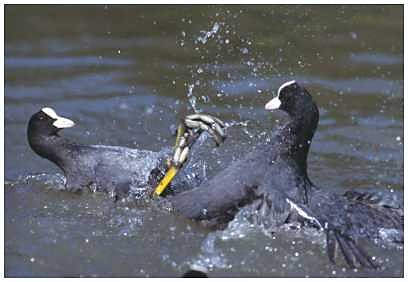 |
CootsAnother day out is to the Arundel Wildfowl and Wetlands Trust. Plenty of captive and semi-wild birds, but not as easy to photograph as you might think. Here's a pair of male coots engaged in a territorial display called 'swanning', captured with the Olympus 350mm f2.8 lens. |
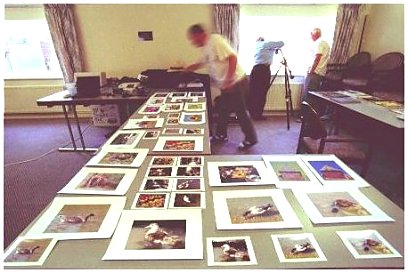 |
Last day of the courseOn the final morning of the course we had a mini display of some of the week's work for the benefit of other courses. Here you can see some of the digital prints laid out. The digital side of the course is handled mainly by Ian Aston (who runs the Olympus Camera Club). The pictures you can see here were produced mostly by the course members themselves using digital cameras, computers and printer provided by Ian (that's Ian in the picture, moving so quickly he's visible only as a blur). |